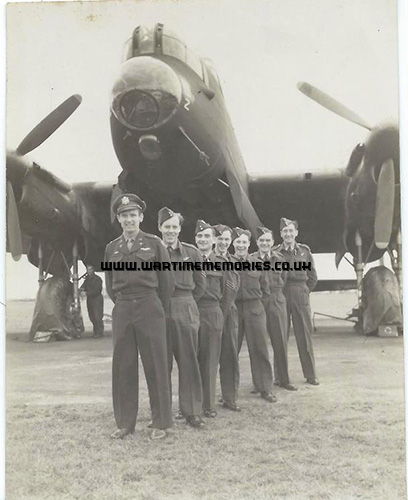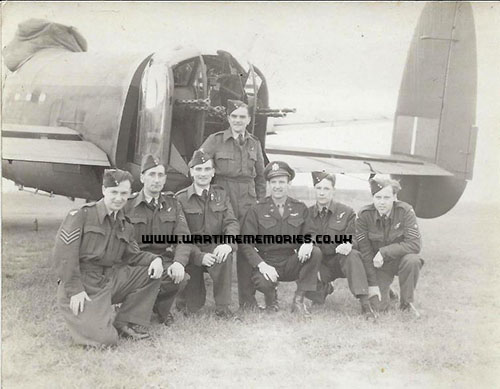F/Lt. James Edward Braithwaite
Royal Canadian Air Force 622 Squadron
from:Los Angles, California, USA
James Braithwaite was an American WW2 veteran, and flew in a Lancaster heavy bomber as a pilot for the RAF flying with 622 Squadron. On 24th of September 1941, he took a physical, and interviewed with the Clayton Knight committee in Pasadena, California. He was recommended for pilot training. On 21st of October 1941 he enlisted in the Royal Canadian Air Force (in Vancouver Canada). On 9th of October 1942, he received his commission as a 2nd Lieutenant, upon graduating from flight school number 4, course 58, in Saskatoon, Saskatchewan Canada. Following graduation he went on 20 days leave back to America on 10th of October 1942. He then attended Flight Instructor's School 2, in Vulcan, Alberta Canada and graduated from there 3rd of January 1943.
James stayed on in Canada as a flight instructor, teaching other cadets how to fly. In early November 1943, he shipped out to England
He was discharged from the RAF on 3rd of December 1943, and at the same time received a commission as a 1st Lieutenant in the U.S Army Air Force. On 4th of December 1943, he was transferred (on paper) to the 8th Air Force, and then attached to the Royal Air Force, London.
On 6th of December 1943 he was assigned to the 12th Replacement Depot, Station 591, Tidworth, England, then 15th of February 1944 he started multi engine bomber training in short Stirling bombers at school 1653 HCU (Heavy Conversion Unit) at RAF Burn. 24th of April 1944 he started Lancaster finishing school 3 at RAF Feltwell. After finishing Lancaster training, he was posted to 622 Squadron at RAF Mildenhall, and was assigned to Lancaster LL782 (GI-H) to replace a pilot that was killed in action. He and his crew flew 10 successful missions, participating in the allied transportation plan (the systematic destruction of German and French transportation infrastructure in preparation for the Normandy invasion).
On their 11th mission 1st of May 1944 to Trappes, France, they were shot down by a German night fighter. One of Lancaster's engines was hit, the propeller blown off, plane and engine caught fire, and went into a dive. After regaining control, the 5 surviving crew members bailed out. The two rear gunners were killed in the attack. A third crew member, the flight engineer. fell to his death after bailing out. He lost his parachute, when the plane was hit, and he decided to hang onto the radio man, and they jumped together. When the chute opened, he lost his grip, and fell to his death.
My father, being the last out, was burned on the face, neck, and arms. He was turned over to the German authorities for medical treatment. He spent 22 days in a Paris hospital, and then was sent to Stalag Luft 3. Two of his crew evaded capture until France was liberated, but the radio man was captured, and ended up a POW as well. In February 1945 Stalag Luft 3 was evacuated, and the prisoners were marched to other Stalags. He marched for 12 days, ending up at Stalag 7a, in Bavaria, where he stayed until being liberated on 29th of April 1945 by the U.S. Army.
Then on 7th of May 1945 the war in Europe was officially over.
Dad received a purple heart for his injuries 21st of May 1945 and on the 3rdof June 1945 had a full physical, including a mental exam at the 7th General Hospital in England. (The report stated that he lost 30 lbs while in captivity). He had a second interview 6th of June 1945, and was then transported by troop ship back to the USA. Upon arrival, he was given 75 days leave and told to report to the Army Air Force Base (AAF re-distribution Station 3) in Santa Anna California on 1st of September 1945 for re-assignment. By then, the war in the Pacific was also over. He was put on reserve status, and was assigned to an Air Reserve Unit. He stayed in the Reserves until 1965, when he was discharged with the rank of Major at age 49.

